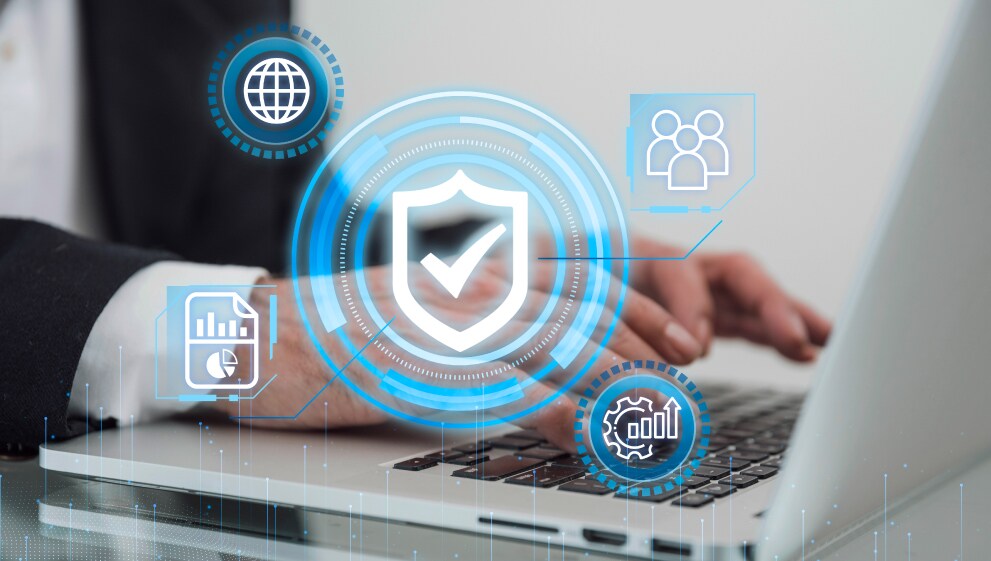Choosing an operating system isn’t just a technical decision anymore; it’s a personal safety choice. Whether you’re a student, working professional, business owner, or simply a casual user, the OS you run daily impacts how safe your data is. In this article, we’re taking a close, realistic look at the security of three major operating systems: Linux vs Windows security, and macOS.
Importance of Choosing the Best Secure Operating System
We all operate our devices and do not actually think about what is on the other side of the screen. However, behind your emails, browsing, or online shopping, the operating system is busy all the time, organising the work, putting apps, and protecting your information.
A safe operating system prevents hacking, viruses, data loss, and unauthorised user logins. When cyber threats are no longer an exception, the choice of a system with great defences is a smart move, but an inevitable one. Proxy-level protection may not be enough in the case of the most elaborate antivirus without OS-level protection.
Linux: Security Features and Risks
This operating system is widely used in various servers and tech environments, and no doubt, many developers have complete trust in it. Its architecture is rooted in the Unix system, which entirely separates user actions from system-level processes. This makes it harder for malicious programs to break through.
Another major plus? It’s open-source. Anyone in the community can look at the code, spot bugs, and improve it. That level of transparency means vulnerabilities are often caught early.
In Linux, regular users don’t have root (admin) access by default, which adds a layer of protection. Hackers can’t make significant changes without those privileges. Plus, Linux users often rely on official repositories for installing software, reducing the risks of rogue downloads.
Advantages of Linux Security
- It’s community-maintained, so security holes are patched quickly.
- Linux doesn’t let apps take over admin access easily.
- Software is usually downloaded from trusted sources.
- There’s minimal background software running, which lowers exposure.
- You can control every part of the system if you want to.
Limitations of Linux Security
- Most distributions don’t come with a built-in antivirus or firewall turned on.
- New users might not understand the settings well enough to secure them fully.
- Different Linux versions (distros) receive updates at different times.
- If wrongly configured, even Linux can be exposed.
Windows: Security Features and Risks
The operating system called Windows is used everywhere these days, like in homes, schools, and offices. Its massive presence makes it a big target for hackers, which is why cybercriminals design most malware to exploit Windows systems.
But now Windows has included security features like BitLocker encryption, Windows Defender antivirus, and Secure Boot. User Account Control (UAC) to prevent unauthorised changes.
Large organisations using Windows can apply strong controls via Group Policy, and tools like Windows Hello offer more secure sign-in options.
Advantages of Windows Security
- It receives security updates regularly, including emergency patches.
- Defender antivirus runs quietly in the background and catches common threats.
- It’s packed with enterprise tools for extra control in offices.
- Secure Boot helps prevent tampering before the OS even starts.
Limitations of Windows Security
- Because it’s so popular, attackers are constantly targeting it.
- Support for older software often creates backdoors.
- Users sometimes ignore or disable UAC prompts, allowing threats to slip in.
- Reboots required after updates can lead to postponed patching.
MacOS: Security Features and Risks
Apple’s macOS has gained a reputation for being secure. While it’s not invincible, the system is designed with a clear emphasis on protecting the user quietly and effectively.
Gatekeeper stops apps that aren’t signed by trusted developers. System Integrity Protection (SIP) blocks software from modifying core parts of the system. And XProtect, though it works silently, scans for known threats in the background.
Another helpful feature that secure your Mac is? The App Sandbox limits how much access each app has. If one app is compromised, it can’t easily infect others. FileVault offers strong encryption, keeping your data safe even if your Mac is stolen.
Limitations of macOS Security
- It doesn’t allow much tweaking of low-level security features.
- Users depend entirely on Apple’s timing and policies.
- The tight system control limits open-source security tool integration.
- Some users assume it’s perfectly safe and skip updates or precautions like installing an antivirus for Mac.
Advantages of macOS Security
- Apple controls both the software and hardware, making it harder to hack.
- It stops unauthorised software from making system changes.
- All apps in the App Store go through strict checks.
- Encryption is easy to enable and works efficiently.
Comparative Analysis: Linux vs. Windows vs. MacOS
Let’s break it down in plain terms:
|
Feature |
Linux |
Windows |
MacOS |
|
Open source |
Yes |
No |
No |
|
Attack frequency |
Rare |
Very frequent |
Growing, but still rare |
|
User control |
Very high |
Moderate |
Limited |
|
Update flexibility |
Manual & fast |
Forced but regular |
Slower |
|
Privacy |
High |
Low |
Moderate |
|
Default antivirus |
Usually none |
Yes (Defender) |
Yes (XProtect) |
|
Default encryption |
Manual (LUKS) |
BitLocker (Pro only) |
FileVault |
|
Community support |
Huge and active |
Mixed |
Official channels only |
Which Operating System is the Most Secure?
If you want complete control and know what you’re doing, Linux is the safest bet. It gives you everything you need to build a fortress around your data, provided you configure it correctly.
If you prefer something that “just works” and keeps you safe with minimal effort, MacOS does a fine job. Apple’s ecosystem, while closed, provides a seamless and reasonably secure experience.
Windows offers convenience and compatibility but demands more caution. With good habits and added security tools, it can be kept safe, but it’s the most exposed by default.
Tips to Enhance Your Operating System Security
Even the best OS can fall short if the user isn’t careful. Here are some practical things you can do, no matter what system you’re on.
-
Regularly Update Your Operating System
Don’t delay updates. Whether it’s Linux patches, Windows cumulative updates, or macOS hotfixes, these often contain essential security fixes. Updating keeps known threats away.
-
Use Strong and Unique Passwords
Don’t use your birthday or “123456.” Create tough passwords. Use a password manager if needed. A good password is your first defence.
-
Enable Firewall Protection
Firewalls watch what goes in and out of your computer. Turn them on. Configure them to block unwanted connections. Most OSes have one built-in—use it.
-
Install Reliable Antivirus/Anti-Malware Software
Even MacOS and Linux users can benefit from antivirus tools. They can stop risky files, phishing attempts, or zero-day threats. Pick a tool that doesn’t slow your system down and keep it updated.
Choosing the Most Secure Operating System
Security isn’t only about software. It’s also about you, the user. All three OSes, Linux, Windows, and MacOS, offer security, but the level of control, exposure, and responsibility differs.
- Linux is great if you’re ready to take charge of your system.
- MacOS suits users who want security built-in without much effort.
- Windows need your attention and safe practices, but can still be made very secure.
It’s not about picking the “perfect” OS. It’s about knowing what you need and how you use your device. Match that with the right system, and you’re already a step ahead.
How Quick Heal Enhances Security on Windows, and macOS Platforms
Quick Heal provides robust security solutions to enhance protection on both Windows and macOS platforms. Here’s an overview of Quick Heal’s key features and enhancements:
- Advanced Antivirus Protection: Quick Heal’s antivirus engine offers real-time scanning and proactive detection of malware, ransomware, and other threats, ensuring comprehensive protection against malicious software.
- Firewall Protection: Built-in firewall capabilities monitor network traffic and prevent unauthorized access to your system, enhancing overall network security.
- Web Security: Secure browsing features such as Safe Banking and Web Security block malicious websites and phishing attempts, safeguarding your online transactions and sensitive information.
- Data Protection: Encryption features and tools like Secure Delete and Data Theft Protection ensure the security and confidentiality of your sensitive data, protecting against unauthorized access and data breaches.
- Cross-Platform Compatibility: Quick Heal’s solutions optimize system performance while offering robust security measures, making it a reliable choice for users seeking comprehensive protection across different operating systems.
Secure Your OS with Quick Heal
Choosing the most secure OS—whether Linux, Windows, or macOS—involves weighing various security features and considerations. Understanding your specific security needs, such as threat resistance, performance impact, and user practices, is crucial in making an informed decision.
By considering these factors and leveraging security solutions like Quick Heal, you can enhance your digital safety significantly. Stay informed, stay protected, and choose a software that best aligns with your security priorities and computing habits.
Frequently Asked Questions
-
Which is the strongest operating system?
There is no single “strongest” operating system. Linux, Windows, and macOS each have their strengths and weaknesses depending on factors like security, software compatibility, hardware support, and ease of use.
-
What is the safest OS to use?
The average user mostly agrees that Linux is the safest OS due to its open source, user account permissions, and fewer security threats. Windows and macOS can, however, be quite secure when properly configured.
-
Is Linux safer than Windows?
Yes, Linux is typically safer than Windows for the average user. Linux’s open source foundation, user account permissions, and fewer targeting malware/viruses give it an advantage in security over Windows.
-
Which is the powerful OS?
There is no universally agreed-upon “most powerful” OS. Linux offers more customisation and access to core functions. Windows supports more third-party hardware and software. macOS excels at user experience and “it just works” integration. The “power” depends on your specific needs.



